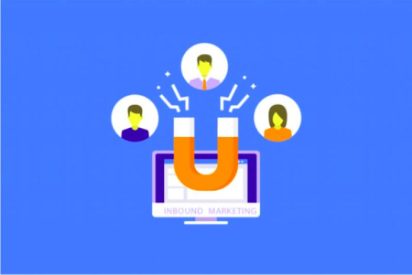Do you know when you’re watching a video that is interrupted by an ad for something outside your field of interest? Or are you visiting a website, and several pop-ups appear in the middle of the screen, interfering with your reading? There are also those cases of unwanted calls made by telemarketing companies at inconvenient hours… Although they are efficient, these tactics began to face some resistance from consumers and advertisers due to the difficulty in measuring results, depending on the vehicles of Communication. This unilateral marketing model is Outbound, which draws the public’s attention more precisely to inform, persuade and remind, without necessarily needing the recipients’ permission of the messages.
With the evolution of the means of Communication and people’s consumption behavior, the control of messages, which used to be with companies and brands, started to be shared with consumers who, now, can choose not only what they buy but the messages they want to receive. Stay tuned to these numbers to understand better:
● 85% of people change channels during commercial breaks when watching TV.
● 84% of people between the ages of 25 and 35 tend to leave a site with many banners.
● More than 200 million Americans are using the ‘Do not call’ service to avoid being harassed by telemarketing companies.
These factors contributed to the rise of a new model, Inbound Marketing, which can be translated from English as ‘attraction marketing.
Inbound Marketing, based on demonstration, engagement, and empowerment, is nothing more than a set of strategies to attract and convert users spontaneously. He teaches that more than persuading, it is essential that companies and brands create a connection with their audience, enchanting, showing concern with what they think, and understanding their needs well so that they can help with what is missing in each purchase step. . Very briefly, we can say that it is to attract more subtly; it is to win customers by offering what they want to consume.
As a result, people impacted by this quality content, created and targeted at them, tend to feel confident enough to allow the company or brand in question to get closer. From there, the construction of a healthy relationship begins, with great possibilities of resulting in sales.
Now that you are more in the know and have understood that Inbound Marketing focuses on content to offer more relevant information that adds tangible or intangible value to the potential customer, let’s talk a little about its application in practice through its three essential pillars.
Content Marketing
It produces relevant and quality content that will attract attention to your company. It is essential to know the preferences of your target audience, define personas, and, based on that, create the type of content that your audience will receive in the best way.
SEO
Typically, consumers start online shopping using search engines (Google, for example) to find what they need. To be seen easily, your company needs to be well positioned. At this moment, SEO (Search Engine Optimization) techniques are indispensable, as they guarantee that your website will appear in the spotlight in searches.
Social Media
Having a presence on social media platforms today is essential for any company, as these channels, in addition to having a large number of users, also allow for easy content sharing and enable more excellent approximation and involvement with consumers. Interacting with people at the right time makes all the difference to your business.
And for those who are worried about how much you would have to “spend” all this on your company or brand, the news is also good: Inbound Marketing can cost up to 62% less than investing in Outbound tactics. Not to mention that in Inbound, the measurement of results can be monitored in real-time, even allowing that, if something does not go as planned, the strategy is immediately changed to reverse the situation. Now, look at a few more reasons to work with this model.
● Everything applied in Inbound Marketing is studied and monitored at all times, with nothing coming from pure intuition. Therefore, it is possible to generate more effective results.
● The average ROI (return on investment) produced through Inbound Marketing strategies is 275%.
● According to companies that applied these strategies, about 57% of acquired customer contacts came from blogging.
● 92% of US marketers see Inbound Marketing as essential for businesses, given the current economy.
● About 80% of people search online.
● 70% is the average number of Internet users who click on links that result from organic search and not paid ads.
● Companies that invest more than 50% of their budget in Inbound Marketing to acquire new customers claim a significant decrease in cost per lead.
● 72% of executives say social media makes all the difference in closing deals.
● Companies that use blogs have 97% more links to their websites.
● Customers who perceive brands through Inbound Marketing strategies become their ‘natural advocates.’
After seeing all this, it is impossible not to end up with that irrefutable invitation: how about starting to outline your strategy right now and investing in an even more efficient method to leverage your business and let it bring solutions to people?


